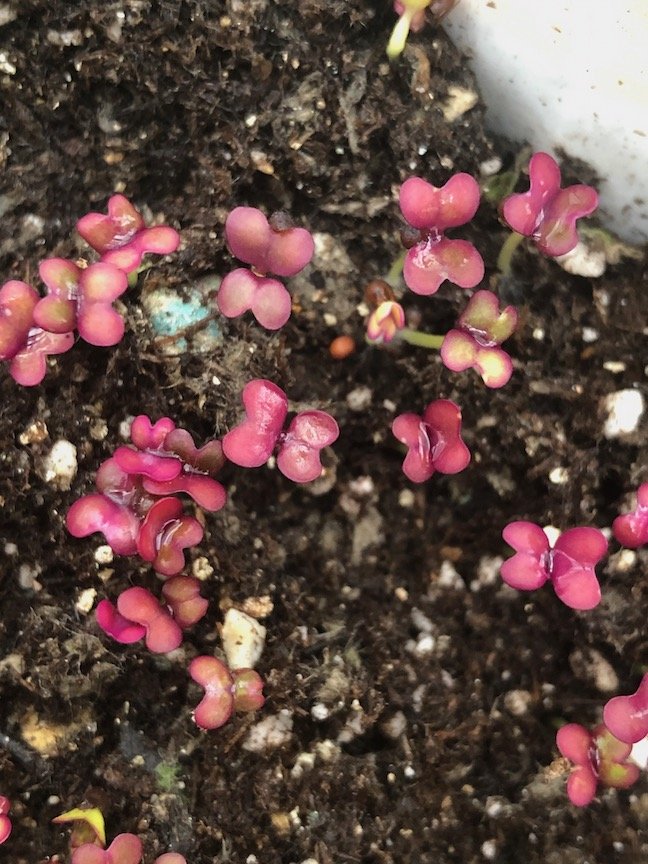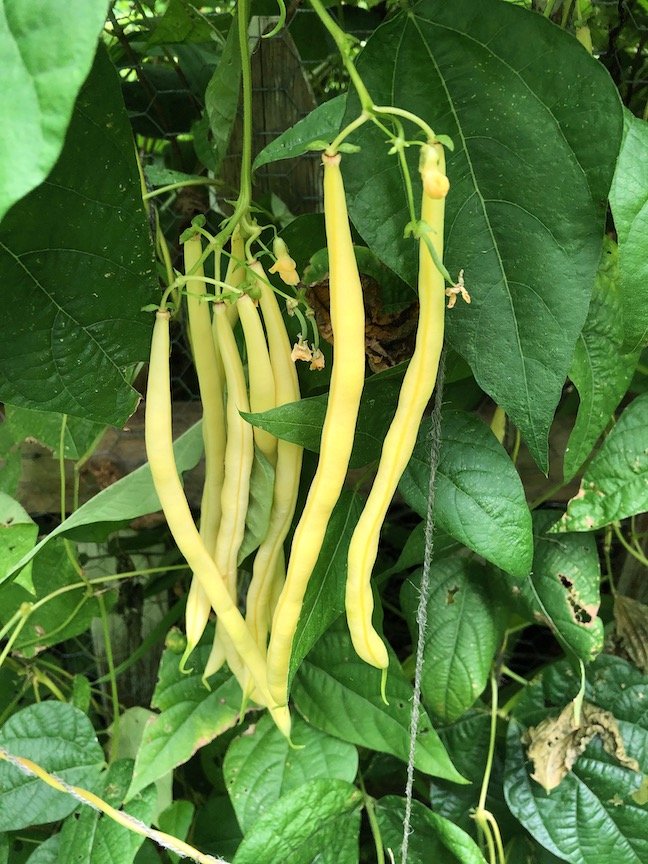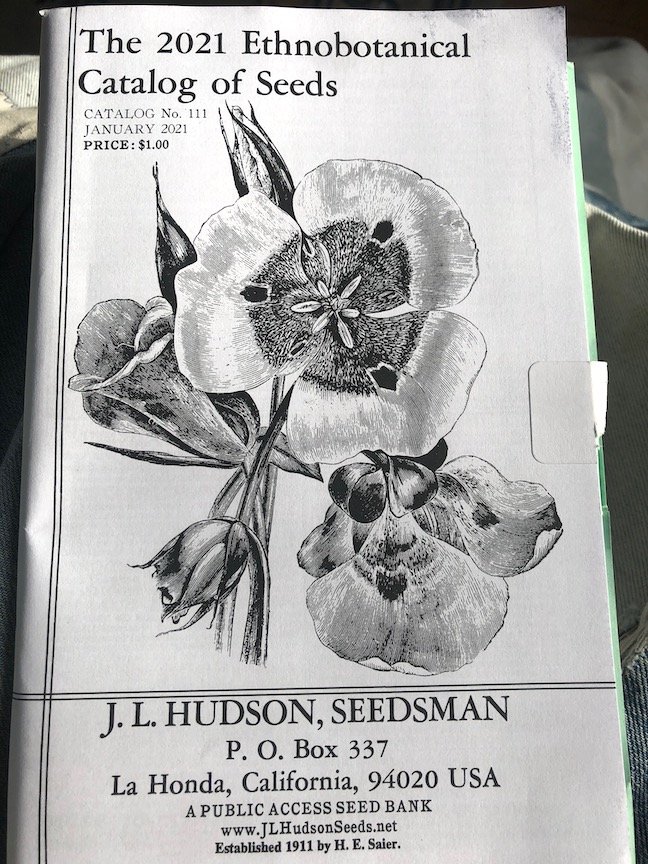How to start seeds indoors and some favorites

I've been starting seeds in late winter for three decades. It's easy and fun. It's a money saver, allows you to grow something unique and is quite satisfying when the plants are full grown to say "I grew it from seed."
A winter sowing of ‘Frizzy Joe’ mustard greens surprised me by sprouting in my unheated greenhouse. I didn’t think they would come up until late February when the days are longer and the angle of the sun heats up the greenhouse.
The tiny lime green seedlings were certainly a welcome sight. They must have received just enough warmth during mild weather to wake up. A couple of days later, with large wet snowflakes gently falling onto the glass roof, I noticed even more of my experimental, cool weather seed project germinating. The prettiest are the reddish-purple foliage of ‘Miz America,’ a beautiful mizuna. The packets came from John Scheepers Kitchen Garden Seeds, one of my favorite seed sources.

My plan is to see how well they do out in the greenhouse. I figure if it gets really cold, into the low 20s, they will probably have to move to the windowsill until things warm up a bit, but we’ll see.
The same technique could be applied to seeds sown now in clamshell containers recycled from the grocery store. Filled with moist planting mix, plant and leave out in the garden to sprout. I would be tempted to stash the containers under a 3-mil thick, translucent drop cloth from the hardware store — just to get them to sprout a little sooner.
Growing from seed is one of the most rewarding parts of gardening. It’s the only way to find certain “unique” varieties, it saves money, and most of all, it provides sweet satisfaction as the plants reach fruition.
If it’s seeds that interest you, buy them now. The demand is high again this year. Baker Creek Heirloom Seeds, one of the biggest seed companies, has shut down their website twice already this season in an attempt to keep up. It’s not that the seeds aren’t there, it’s just the orders are overwhelming. They are running 24-hours-a-day to fill requests. I have seen some seeds I want are already sold out.
There are some favorites and new seeds coming from Kitchen Garden Seeds, too. Last season I grew ‘Monte Gusto Yellow’ pole beans and was blown away by the cultivar (check out this video). This year, I’ve added its green podded cousin ‘Monte Cristo’ pole bean. ‘Red Streaked’ arugula will compliment my long list of other arugula types (I’m obsessed).

‘Monstruex de Viroflay’ is a French heirloom spinach from 1866 that is said to be bolt resistant, meaning it won’t go to seed in April when we get three hot days.
I’m also going to grow ‘Shiraz Purple’ snow pea again. Its production last spring was unparalleled to any other snow pea I’ve ever grown. It’s pushed my old favorite ‘Oregon Sugar Pod II’ out of the garden, which I feel guilty about since I’ve planted it for decades.
Seed racks are now being filled at local nurseries. Better to take a trip sooner rather than later. It’s anyone’s guess if they will be able to be refilled when empty. It’s a trend that began last spring as the pandemic hit and looks to continue well into this planting year, as well.
Starting from seed is pretty easy. The biggest mistake for beginners is not having a good light source. Seedlings need something bright like LED lighting. There are a variety of different types available at garden centers and nurseries.
To get started, get some planting mix, flats and containers with drainage. In my operation, I save the six packs from last year’s flowers.
The containers are filled with a pre-moistened mix. The perfect texture holds together when squeezed, but doesn’t drip. The seeds are sprinkled on to the mix, then a little more of the mix is laid on top and pressed in to assure good contact between seed and soil.
Then, cover the entire container with clear plastic and keep in a warm spot until germination begins. The plastic is removed and in a couple weeks. Start liquid fertilization at half strength, then two weeks later use the full concentration as prescribed on the label.
From day one, the seedlings should be under bright light for at least 16 hours, the light source should be as close as possible to the plants.
And that’s all there is to it for most seeds!
In February the tiniest seeds can be started indoors, but the main crop of bigger seeds — whether flowers or vegetables — usually aren’t planted until mid-March. I start my main crop of tomatoes on April 1.
There are hundreds of online sources for seeds, don’t be afraid to try some of them. Burpee is the company most of us started ordering from, and I’m particularly impressed with their tomato breeding program. Be sure to poke around other sites for something cool too, but be warned, as that starts the wonderful journey down a rabbit hole of growing something no one else is planting.
The J.L. Hudson, Seedsman catalog is another favorite source, especially for unique varieties. I spent a couple of hours with it last week. No pictures, just listings of trees, shrubs, perennials, jasmine tobacco, annuals, herbs and more. It’s a great read for any gardening nerd. I marked up the catalog and then put together my order online: purple tomatillos, giant winter radishes, perennial greens, strange beet crosses, weird Japanese morning glories, shade-loving perennials, rainbow kale and much more. ‘China Rose’ radish was planted last September and there are still a few in the garden. The roots were huge — the size of an oblong baseball. The white flesh had a little zip but was tender and mild compared to spring radishes.

The anticipation of placing a seed order is thrilling, whether it’s something that’s been in the garden before or a brand-new cultivar.
Grow what you love and you’ll never be disappointed — even if you don’t know you love it yet.

